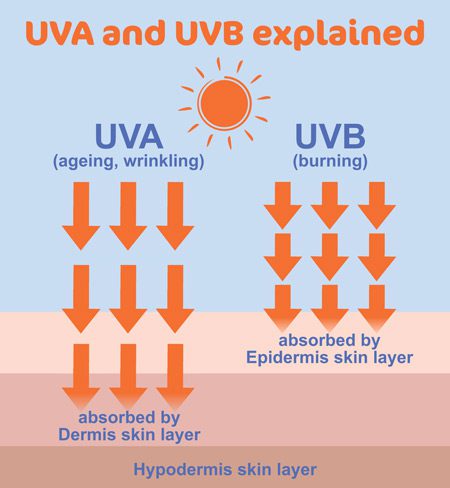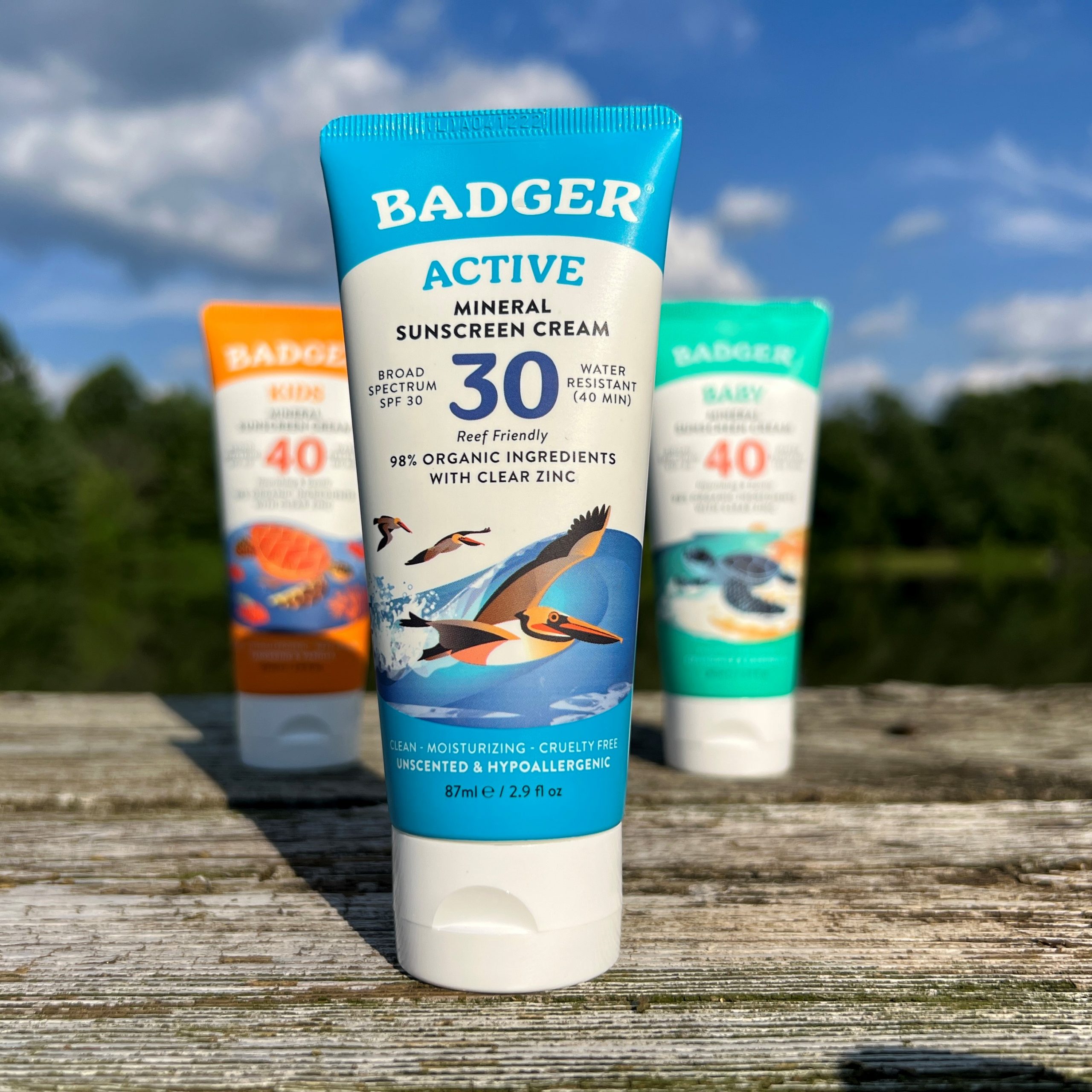Wear sunscreen, and don’t forget to re-apply. Simple, right? Unfortunately, when it comes to sun protection, there is a lot to consider regarding the safety, efficacy, and environmental impacts of the products you’re using. You may have seen recent recalls of certain sun-care products and heard some concerning information regarding how quickly certain chemical components in sunscreen are absorbed into the bloodstream. Because sunscreens are not subject to standard drug safety testing, consumers are justified in questioning the safety of these products.
In February of 2019, the Food and Drug Administration (FDA) issued a proposed set of rules for sunscreen products. These rules would be an improvement on our current safety standards; however, chemical manufacturers and certain sunscreen companies continue to lobby heavily for a weaker proposal.
The CARES Act of 2020 included OTC monograph (which includes sunscreen) reform provisions granting the FDA transformative new authorities that will meaningfully advance efforts to modernize drug development and the review process under the OTC Drug Review. This updated process is intended to improve efficiency, timeliness and predictability and allows the FDA to address safety issues more rapidly.
In the meantime, it is up to you, the consumer, to sift through the lesser products on the market and select the ones that will be good to your body, your family, and our planet.
The Basics
UVB vs UVA Rays

Graphic Courtesy of skinrevisionaz.com
The sun emits ultraviolet light, or radiation, including ultraviolet B (UVB) and ultraviolet A (UVA). UVB rays produce sunburn. They are also the main cause of non-melanoma skin cancers, such as squamous cell carcinoma. UVA rays also play a role in skin cancer formation. These rays deeply penetrate the skin and play a role in skin aging. Approximately 95% of the UV light that reaches our skin is UVA light, therefore it should be of great concern. Unfortunately, American sunscreens generally contain inferior UVA protection as compared to those in Europe – you can read more about that here. According to the Environmental Working Group (EWG), zinc oxide is one of the best UVA filters in American sunscreens.
Broad Spectrum
Current FDA regulations for “broad spectrum” (providing both UVB and UVA protection) sunscreens require that they have a critical wavelength value of 370 nanometers. This sets the bar low enough so that just about every sunscreen on the US market can bear the label “broad spectrum”. Until the FDA makes changes to their regulations, it is wise to read the ingredients in your sunscreen and decide for yourself whether it is truly going to protect your skin from UVB and UVA rays.

Brian L Diffey et al., Suntanning with Sunscreens: A Comparison With Sunbed Tanning. Photodermatology, Photoimmunology & Photomedicine, 2015, 31(6), 307–314.

Photo Courtesy of Badger Balm
Guide to SPF
Sun Protection Factor (SPF) is a measure of how well a sunscreen will protect skin from UVB rays. Here’s a helpful look at what the SPF number really means:
- SPF 15 blocks 93% of UVB rays
- SPF 30 blocks 97% of UVB rays
- SPF 50 blocks 98% of UVB rays
According to the EWG, “Products with high sun protection factor, or SPF, tempt people to apply too little sunscreen and stay in the sun too long. The FDA has proposed prohibiting the sale of sunscreens with SPF values greater than 60+ and have called higher SPF values “inherently misleading,” but the agency has not yet issued a regulation that carries the force of law.”
Efficacy of Sunscreen
Let’s set one thing straight: sunscreen helps protect your skin, but it does not make you impervious to the sun’s damaging rays. One of the worst mistakes you can make is to count on your sunscreen providing more protection than it actually does: remember that staying out of the sun and covering up your skin are the most fool-proof methods of skin protection. As with most products, correct use is key – so follow instructions on how much to use and how often to apply, carefully. Don’t forget your eyelids, ears (front and back!), any exposed areas of your scalp, and of course an SPF lip balm to protect your lips.
 Ingredients
Ingredients
The Good
Mineral Filters
Mineral sunscreens use zinc oxide and/or titanium dioxide. Although these have a bad reputation for being chalky and bright white, many formulas available today feel smooth and rub in easily. (See our product suggestions, below!) According to the EWG, “The weight of evidence indicates that both zinc oxide and titanium dioxide pose a lower hazard than most other sunscreen ingredients approved for the U.S. market.”
Organic Ingredients
At Kimberton Whole Foods, our goal is always to provide as many organic options as possible, and that includes skincare. Look for sunscreen brands that use organic oils and beeswax as their base.
The Bad
Chemical Filters
Chemical filters in sunscreens include oxybenzone, avobenzone, octisalate, octocrylene, homosalate and octinoxate. Sometimes a single product will contain a combination of 2 or more of these. Oxybenzone and Octinoxate are hormone-disrupting chemicals, and are linked to coral bleaching in reefs.
Artificial Dyes & Fragrances
We believe that artificial dyes and fragrances have no place in skincare, and this includes sunscreen. What you put on your skin is just as important as the food you put into your mouth!
Nanoparticles
Nanoparticles are microscopic particles, which are thought to be potentially harmful to human health and hazardous to coral reefs. Once again, manufacturers are not required to disclose the qualities of the particles used in their sunscreens, so it can be hard to know whether your mineral sunscreen is made using nanoparticles. When in doubt, we still recommend that you select a mineral sunscreen. Learn more on this topic here.
Environmental Impact
You may have noticed the term “Reef Safe” on certain sunscreens. Unfortunately, this is not yet a regulated term and not all products may be labeled appropriately. Instead look for sunscreens free of oxybenzone and octinoxate, and instead use mineral-based sunscreens, like those made with zinc oxide. Avoid sunscreens that contain nanoparticles. (Look for the term “non-nano”, or ask the company directly if their packaging doesn’t state this clearly.) Also, look for the word “biodegradable”, but note that this term, too, is unregulated, so you may need to follow up with the company to verify their claim, or carefully read through the list of ingredients to check. (Plant oils and beeswax are great biodegradable options!)
Badger sunscreens are a top-rated choice by the EWG. Find their entire line at all our stores! Their zinc sunscreen is both safe and effective, and rubs in clear. All Badger sunscreens range from 84% to 99% Certified Organic by the NSF, and they comply with the Leaping Bunny Standard that ensures their products are not tested on animals.
 Alba Botanica mineral sun protection for even the most sensitive skin, EWG rated 2-3, and containing no oxybenzone or octinoxate, fragrance free, water resistant (up to 80 minutes), biodegradable formula.
Alba Botanica mineral sun protection for even the most sensitive skin, EWG rated 2-3, and containing no oxybenzone or octinoxate, fragrance free, water resistant (up to 80 minutes), biodegradable formula.
Derma.E Infused with antioxidants, botanical extracts and vitamins, and provides UVA/UVB broad spectrum protection. Made with Non-Nano Zinc Oxide to provide anti-aging defense, help fight free radical damage and nourish the skin. EWG rated 2.
One thing is for sure — please protect yourself from the sun! Incidents of both melanoma and non-melanoma skin cancers have been rising for the past quarter century. The relationship between skin cancers and overexposure to the sun is well-documented. Sun safety is important for everyone, including people of all skin tones. Consumers should continue to use sun protection measures, including wearing protective clothing, sunglasses, and a hat that provides adequate shade, as well as finding shade whenever possible during periods of peak sunlight. For more information about sunscreens and sun protection visit FDA‘s website.
Still have questions? Learn more than you ever thought you could know about sunscreen, and see a ranking of brands on the Environmental Working Group website.





